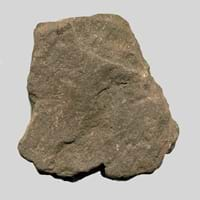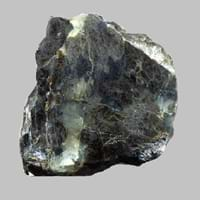Definition
Shale is a fine-grained sedimentary rock which is formed by the compaction of silt and clay-size mineral particles
Pyroxenite is a dark, greenish, granular intrusive igneous rock consisting mainly of pyroxenes and olivine
Discoverer
Unknown
Unknown
Etymology
From German Schalstein laminated limestone, and Schalgebirge layer of stone in stratified rock. From Old English scealu in its base sense of- thing that divides or separate,
From pyro- fire + Greek xenos stranger as the mineral group was new to igneous rocks
Class
Sedimentary Rocks
Igneous Rocks
Sub-Class
Durable Rock, Medium Hardness Rock
Durable Rock, Hard Rock
Group
Not Applicable
Plutonic
Other Categories
Fine Grained Rock, Opaque Rock
Coarse Grained Rock, Opaque Rock
Texture
Clastic, Splintery
Clastic, Granular, Phaneritic, Porphyritic
Color
Black, Brown, Buff, Green, Grey, Red, Yellow
Black to Grey, Bluish - Grey, Dark Greenish - Grey, Green, Light Greenish Grey
Durability
Durable
Durable
Appearance
Muddy
Layered, Banded, Veined and Shiny
Interior Uses
Decorative Aggregates, Homes, Interior Decoration
Countertops, Decorative Aggregates, Interior Decoration, Kitchens
Exterior Uses
As Building Stone, As Facing Stone, Office Buildings
As Building Stone, As Facing Stone
Other Architectural Uses
Curbing
Curbing
Construction Industry
Cement Manufacture, Construction Aggregate, for Road Aggregate, Making natural cement, Raw material for the manufacture of mortar
As Dimension Stone, Building houses or walls, Cement Manufacture, Construction Aggregate, for Road Aggregate
Medical Industry
Not Yet Used
Not Yet Used
Antiquity Uses
Artifacts, Sculpture
Artifacts
Commercial Uses
Creating Artwork, Pottery
Cemetery Markers, Commemorative Tablets, Laboratory bench tops, Jewelry, Sea Defence, Tombstones
Types
Red Shale, Black Shale, Green Shale, Grey Shale and Yellow Shale
Clinopyroxenites, Orthopyroxenites and Websterites
Features
Easily splits into thin plates, Generally rough to touch, Very fine grained rock
Generally rough to touch, Host rock for Diamond, Is one of the oldest rock
Archaeological Significance
Monuments
Used
Not Yet Used
Famous Monuments
Jantar Mantar in India
Not Applicable
Sculpture
Used
Not Yet Used
Famous Sculptures
Data Not Available
Not Applicable
Pictographs
Used
Not Used
Petroglyphs
Used
Not Used
Figurines
Used
Not Yet Used
Formation
Shale forms when very fine-grained clay particles are deposited in water which settle at the bottom of water bodies. They are later compacted hence forming shale.
Pyroxenites are ultramafic igneous rocks which are made up of minerals of the pyroxene group, such as augite and diopside, hypersthene, bronzite or enstatite.
Mineral Content
Albite, Biotite, Calcite, Chert, Chlorite, Dolomite, Hematite, Micas, Muscovite or Illite, Pyrite, Quartz, Silica, Sulfides
Amphibole, Augite, Bronzite, Chromite, Diopside, Enstatite, Garnet, Hornblende, Hypersthene, Magnetite, Pyroxene
Compound Content
Ca, Fe, Mg, Silicon Dioxide, Sodium
Aluminium Oxide, CaO, Chromium(III) Oxide, Iron(III) Oxide, Potassium Oxide, MgO, Sodium Oxide, Silicon Dioxide, Sulfur Trioxide
Types of Metamorphism
Not Applicable
Burial Metamorphism, Impact Metamorphism, Regional Metamorphism
Types of Weathering
Biological Weathering, Chemical Weathering, Mechanical Weathering
Biological Weathering, Chemical Weathering, Mechanical Weathering
Types of Erosion
Chemical Erosion, Coastal Erosion, Glacier Erosion
Chemical Erosion, Coastal Erosion, Water Erosion
Grain Size
Very fine-grained
Coarse Grained
Fracture
Not Available
Uneven
Streak
White
White, Greenish White or Grey
Porosity
Highly Porous
Less Porous
Luster
Dull
Dull to Vitreous to Submetallic
Compressive Strength
Not Available
Toughness
2.6
Not Available
Specific Gravity
2.2-2.8
3.2-3.5
Transparency
Opaque
Opaque
Density
2.4-2.8 g/cm3
3.1-3.6 g/cm3
Specific Heat Capacity
Not Available
Resistance
Heat Resistant, Impact Resistant
Impact Resistant, Pressure Resistant, Wear Resistant
Deposits in Eastern Continents
Asia
Bangladesh, China, India, Russia
India, Russia
Africa
Ethiopia, Kenya, Morocco, South Africa, Tanzania
South Africa
Europe
Austria, France, Germany, Greece, Italy, Romania, Scotland, Spain, Switzerland
Germany, Greece, Italy, Scotland, Turkey
Others
Not Yet Found
Greenland
Deposits in Western Continents
North America
USA
Canada, USA
South America
Bolivia, Chile, Colombia, Ecuador, Peru, Venezuela
Brazil, Colombia, Venezuela
Deposits in Oceania Continent
Australia
New South Wales, New Zealand, Queensland, Victoria, Western Australia
New Zealand, Queensland
All about Shale and Pyroxenite Properties
Know all about Shale and Pyroxenite properties here. All properties of rocks are important as they define the type of rock and its application. Shale belongs to Sedimentary Rocks while Pyroxenite belongs to Igneous Rocks.Texture of Shale is Clastic, Splintery whereas that of Pyroxenite is Clastic, Granular, Phaneritic, Porphyritic. Shale appears Muddy and Pyroxenite appears Layered, Banded, Veined and Shiny. The luster of Shale is dull while that of Pyroxenite is dull to vitreous to submetallic. Shale is available in black, brown, buff, green, grey, red, yellow colors whereas Pyroxenite is available in black to grey, bluish - grey, dark greenish - grey, green, light greenish grey colors. The commercial uses of Shale are creating artwork, pottery and that of Pyroxenite are cemetery markers, commemorative tablets, laboratory bench tops, jewelry, sea defence, tombstones.










